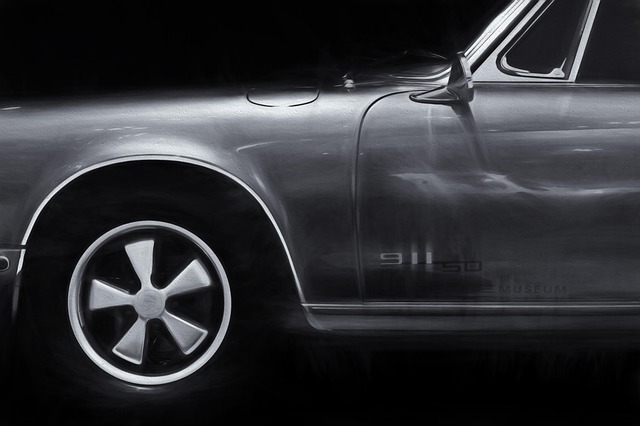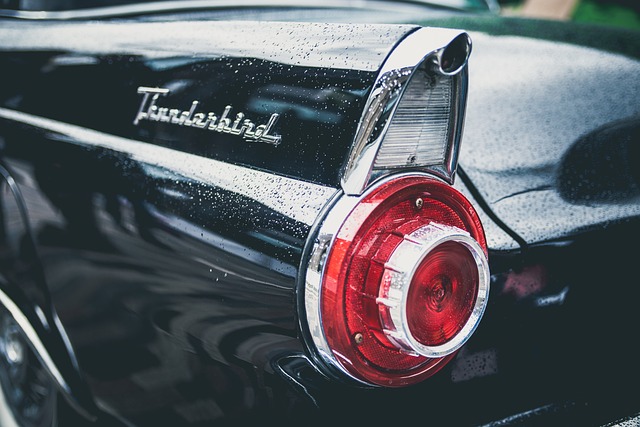VIN verification is crucial for classic car enthusiasts, ensuring a vehicle's authenticity by cross-referencing its unique identification number (VIN) against official databases. This process confirms a vintage car's history and integrity, preventing fraud. A vin verifier uses specialized tools to check the VIN against make, model, and year specifications. Proper verification enhances a classic car's value and legitimacy, offering peace of mind for owners when selling or insuring their vehicles. Reputable verifiers and online platforms streamline the process by checking against DMV records, car history reports, and manufacturer databases.
“Uncover the secrets of your classic car’s history with our expert guide to VIN verification. Understanding Vehicle Identification Number (VIN) verification is crucial for any car enthusiast or owner seeking to ensure their vehicle’s authenticity and value. This comprehensive article delves into the basics of VIN verification, highlighting its importance in identifying genuine classics. We explore the role of a VIN verifier, whose expertise ensures accurate inspections. Learn a step-by-step process for performing your own VIN inspection and discover top tips to make the process efficient and reliable. Get ready to unlock the full potential of your classic car with this essential knowledge.”
- Understanding VIN Verification: The Basics and Importance
- Who is a VIN Verifier? Roles and Responsibilities
- Step-by-Step Guide to Performing a VIN Inspection
- Top Tips for Accurate and Efficient VIN Number Verification
Understanding VIN Verification: The Basics and Importance

Understanding VIN Verification: The Basics and Importance
VIN verification is a crucial process for classic car owners and enthusiasts, ensuring that the vehicle’s identification number (VIN) is authentic and accurately represents the make, model, and year of the car. It’s a critical step to confirm the car’s history and integrity, especially when dealing with vintage or classic vehicles known for their unique characteristics and potential for restoration. A VIN verifier or inspector uses specialized tools and knowledge to check the VIN number against official databases, ensuring it hasn’t been tampered with and matches the vehicle’s actual specifications.
This process is of utmost importance for several reasons. Firstly, it helps prevent fraud and identity theft, as a fake or altered VIN can mislead potential buyers. Secondly, it aids in accurate record-keeping, allowing owners to maintain a detailed history of their classic car’s maintenance, repairs, and previous ownership. Moreover, when selling or insuring a vintage vehicle, a verified VIN is essential for legal and financial transactions, providing peace of mind for both parties involved. Thus, whether you’re a collector, restorer, or simply proud owner, taking the time to undergo proper VIN verification can significantly enhance the value and legitimacy of your classic car.
Who is a VIN Verifier? Roles and Responsibilities

A VIN Verifier, also known as a VIN inspector or expert, is a specialized professional tasked with ensuring the authenticity and integrity of a classic car’s Vehicle Identification Number (VIN). Their role is pivotal in the process of vin verification, which involves cross-referencing the unique 17-character VIN against official databases to confirm its original manufacturing details. These experts are often sought after by classic car owners, collectors, and dealers for their thorough knowledge and experience in identifying potential alterations or discrepancies in a vehicle’s history.
Their responsibilities encompass a comprehensive inspection of the VIN plate itself, as well as verifying documents and records associated with the car’s ownership and maintenance history. They employ advanced techniques and tools to scan and decode the VIN, ensuring it matches the documented specifications. A vin inspector near me, for instance, would be able to cross-reference this information with state DMV databases (or their equivalents in other regions) to provide a vin number verification that is both accurate and reliable, thus helping to safeguard against potential fraud or misrepresentation in the classic car market.
Step-by-Step Guide to Performing a VIN Inspection

Performing a VIN (Vehicle Identification Number) inspection is crucial for both car buyers and sellers to ensure the vehicle’s authenticity. Here’s a step-by-step guide to help you through this process, aiming to make it as straightforward as possible. Begin by locating the VIN on the vehicle itself—typically found on the driver’s side door frame, engine hood, or in the glove compartment. Next, use a vin verifier or inspection tool to cross-reference the number with available databases, ensuring its validity and checking for any reported accidents or title issues that might impact the car’s value or safety.
For accuracy, compare the provided VIN with the one displayed on official documents like registration papers and insurance cards. If discrepancies are found during this vin verification process, further investigation is required to establish the vehicle’s true history. Several online services offer reliable vin number verification, often in collaboration with state DMV (Department of Motor Vehicles) databases, making it easier for both parties involved in a transaction to ensure they’re dealing with a genuine classic car that has been properly maintained and documented throughout its life.
Top Tips for Accurate and Efficient VIN Number Verification

When conducting a VIN (Vehicle Identification Number) verification, precision and efficiency are key to ensuring the authenticity of the vehicle. Here are top tips to help make the process smoother:
1. Use a Reputable Vin Verifier: Opt for a trusted vin verifier or inspector who has experience in the classic car domain. A professional with expertise in this field can spot potential red flags, such as altered or tampered VIN numbers, which may be more common in older vehicles. They have access to advanced databases and tools that streamline the verification process.
2. Cross-Reference Data: Compare the provided VIN number with multiple reliable sources, including the DMV (Department of Motor Vehicles) records, car history reports, and vehicle manufacturer databases. Multiple points of reference can help identify discrepancies or potential fraud. Online platforms and apps designed for VIN verification can make this cross-reference process faster and more convenient.
3. Inspect Visible Markings: Examine the physical location where the VIN is etched or stamped on the vehicle. Ensure it’s clear, legible, and matches the make, model, and year of the car. Any visible alterations or inconsistencies should be noted and may require further investigation.
4. Check Vehicle Documentation: Review all available documentation, including title records, registration papers, and any service history documents. These should reflect the accurate VIN number and any changes made to the vehicle over time. Comparing these with the verified VIN can help validate the vehicle’s history.
5. Utilize Online Tools: Many online services offer quick and affordable VIN verification, providing instant access to detailed vehicle information. These tools scan vast databases to ensure the VIN is valid and match it with the reported data, offering peace of mind for buyers and sellers alike.
When it comes to classic cars, accurate VIN verification is key to ensuring a sound investment and maintaining historical integrity. By following the expert tips outlined in this guide, whether you’re a seasoned collector or a newcomer to the world of vintage vehicles, you can confidently perform a vin inspection, identify potential issues, and verify the vehicle’s authenticity. Remember, a qualified vin verifier or inspector is invaluable for navigating the intricate process, ensuring you make informed decisions and find the perfect classic car to add to your collection.
